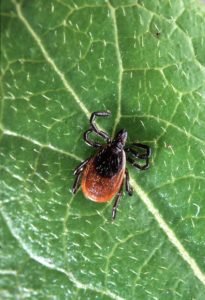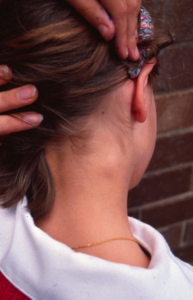How to Perform a Tick Check at Home
Spring has sprung! The sun is (occasionally) peeking out from behind the clouds to thaw us from the winter chill, and, after months of being cooped up and bundled up indoors, we are all ready to get out into the wild, bare our skin, and …
Get bit by a tick? Of course, no wants to bring a tick home with them from their outdoor adventuring, but, if you are living in Maine or other coastal areas of the United States, the likelihood is very high. According to the website Everythingticks.com, these minuscule insects thrive in warm, wooded and humid environments – which describes the Maine climate in the spring and summer to a T! Unfortunately, these creeping, crawling creatures can transmit serious diseases through their bites, including Lyme disease. The sooner ticks are found and (properly) removed, the lower the risk of becoming infected with Lyme disease or other infections, many of which have long-term side effects if left untreated.Tick Checks Can Keep You Safe and Healthy  Performing a tick check as soon as you get back home from hiking or other outdoor activities can help keep you safe from ticks that carry disease. Follow the steps below on yourself and any friends or family members that were adventuring with you outside – even if you were just frolicking in a grassy backyard!1. Remove Clothing – Try to remove most of the clothing you wore outside as soon as possible to avoid bringing ticks into your home on shirt sleeves, pant legs or socks. Leave the clothes outside until you are ready to put them in the dryer on high-heat to kill any ticks that might be lurking.2. Check Hot Spots – Just as ticks like hot and humid external environments, they also gravitate to the hotter and sweatier areas of the human body before they latch on for a meal of blood. “Hot spots” are areas of the body to which ticks gravitate, such as the armpits, groin and hairline. Because ticks can be so small, it is important to look closely, especially in areas with dark hair. If you are on your own, you can use a mirror to check hard-to-see areas, or you can ask a friend or family member to double check spots that are difficult to reach on your own.
Performing a tick check as soon as you get back home from hiking or other outdoor activities can help keep you safe from ticks that carry disease. Follow the steps below on yourself and any friends or family members that were adventuring with you outside – even if you were just frolicking in a grassy backyard!1. Remove Clothing – Try to remove most of the clothing you wore outside as soon as possible to avoid bringing ticks into your home on shirt sleeves, pant legs or socks. Leave the clothes outside until you are ready to put them in the dryer on high-heat to kill any ticks that might be lurking.2. Check Hot Spots – Just as ticks like hot and humid external environments, they also gravitate to the hotter and sweatier areas of the human body before they latch on for a meal of blood. “Hot spots” are areas of the body to which ticks gravitate, such as the armpits, groin and hairline. Because ticks can be so small, it is important to look closely, especially in areas with dark hair. If you are on your own, you can use a mirror to check hard-to-see areas, or you can ask a friend or family member to double check spots that are difficult to reach on your own. 3. Remove any Ticks – If you do find any ticks, it is important to remove the tick properly and fully. For more information about how to do this, go here.4. Monitor for Signs and Symptoms – After removing a tick from your body, monitor how you are feeling closely. If you come down with a fever or chills or notice any odd rashes, body aches or other strange symptoms, be sure to contact your doctor immediately to discuss treatment options.5. Consider Getting Your Tick Checked for Diseases – Click here for more information about testing a tick for disease-causing pathogens.
3. Remove any Ticks – If you do find any ticks, it is important to remove the tick properly and fully. For more information about how to do this, go here.4. Monitor for Signs and Symptoms – After removing a tick from your body, monitor how you are feeling closely. If you come down with a fever or chills or notice any odd rashes, body aches or other strange symptoms, be sure to contact your doctor immediately to discuss treatment options.5. Consider Getting Your Tick Checked for Diseases – Click here for more information about testing a tick for disease-causing pathogens.

